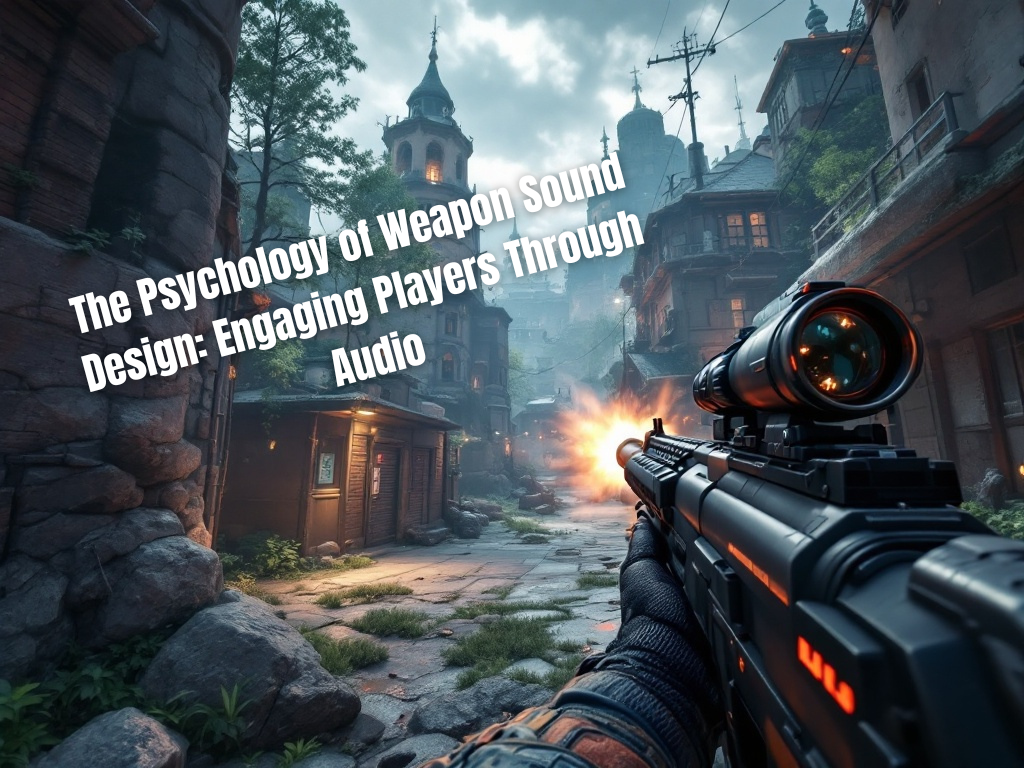Game Audio Blog
The Role of Adaptive Music in Creating Immersive Game Worlds
In modern video games, music does much more than set the mood—it reacts, transforms, and evolves with the player’s actions and experiences. This concept, known as adaptive music, plays a crucial role in crafting immersive game worlds. Unlike static soundtracks, adaptive music adjusts dynamically based on in-game events, such as changes in environment, player actions, or narrative progression. This innovation elevates gameplay and helps players feel more connected to the virtual world. In this article, we’ll explore how adaptive music works, why it matters, and the tools developers can use to implement it effectively.
What is Adaptive Music?
Adaptive music is a technique where the game’s soundtrack evolves in real-time in response to gameplay. This means the music can change seamlessly to reflect shifts in tension, mood, or player interaction. Rather than looping a single track, adaptive music allows developers to weave multiple layers of audio that respond to context—creating a richer, more immersive experience.
For example, in a stealth game, the music may start with a soft, ambient background. As the player approaches enemies, more intense layers of sound slowly build, heightening the suspense. If the player is detected, the music transitions into a fast-paced combat theme. These smooth transitions make the world feel alive, as if the music were a living entity reacting to the player’s every move.
Why Adaptive Music Enhances Immersion
- Dynamic Response to Player Actions
- Players enjoy feeling like their actions impact the game world. When the music shifts in response to what they do—like winning a fight or sneaking past guards—it reinforces the idea that they are in control. This dynamic feedback loop between music and action keeps players engaged and emotionally connected.
- Establishes Atmosphere and Mood in Real-Time
- Games take players on emotional journeys, and adaptive music ensures the soundtrack evolves to match every twist and turn. In an open-world RPG, for instance, a tranquil exploration theme can morph into a foreboding tune as night falls, signaling potential danger. This level of responsiveness strengthens the sense of immersion by reflecting environmental changes in real-time.
- Reduces Repetition and Listener Fatigue
- Repetitive loops can break immersion, reminding players that they’re inside a game. Adaptive music avoids this pitfall by using variations and seamless transitions, ensuring players always hear fresh content. The unpredictability of adaptive music helps maintain engagement, especially during longer play sessions.
- Supports Narrative Progression
- Adaptive music serves as a storytelling tool, guiding players emotionally through key moments. In narrative-driven games, musical cues can signal important shifts in plot or character development. For instance, a character’s theme may subtly evolve throughout the game, reflecting their personal growth or emotional journey.
How Adaptive Music Works: Key Techniques
There are several techniques developers use to create adaptive soundtracks. Below are some common methods:
- Horizontal Re-Sequencing
- This method involves rearranging different musical segments (or “stems”) in real-time. The game selects and plays these segments based on player actions or game states. For example, a battle theme might switch between a calm section and an intense one, depending on whether the player is winning or losing.
- Vertical Layering
- In vertical layering, multiple layers of a track play simultaneously, with each layer representing a different musical element (e.g., drums, strings, or synths). As the game progresses, certain layers are added or removed to reflect the intensity of the action. This technique allows for subtle transitions, such as introducing new instruments as tension rises.
- Parameter-Based Modulation
- Developers can also use in-game parameters (like health level or enemy proximity) to adjust music dynamically. For instance, the music might slow down or shift to a minor key if the player’s health is low, amplifying the sense of danger.
- Crossfading Between Tracks
- Crossfading allows smooth transitions between different pieces of music, ensuring there are no jarring changes. This is especially useful in open-world games where the player frequently moves between areas with distinct themes.
Examples of Adaptive Music in Video Games
Many iconic games use adaptive music to great effect. Below are a few noteworthy examples:
- The Legend of Zelda: Breath of the Wild
- This game uses subtle, adaptive soundscapes that shift based on the environment and the player’s actions. The music is minimal during exploration but intensifies during combat, creating an atmospheric experience.
- Red Dead Redemption 2
- The soundtrack dynamically changes depending on the player's location and the time of day. For example, the music becomes more somber and reflective during nighttime rides, enhancing the emotional depth of the game.
- DOOM (2016)
- DOOM is known for its aggressive, heavy-metal soundtrack that ramps up during combat. As the player defeats enemies, additional layers of music are added, making the gameplay feel relentless and thrilling.
Tools for Implementing Adaptive Music
Several tools and middleware solutions help developers implement adaptive music efficiently:
- FMOD
- FMOD is a popular audio middleware that allows developers to create dynamic soundtracks through vertical layering and real-time parameter control. It offers a user-friendly interface for designing adaptive audio without heavy coding.
- Wwise
- Wwise provides advanced tools for audio integration, including horizontal re-sequencing and parameter-based modulation. It’s widely used in AAA games and offers robust support for adaptive music design.
- Unity and Unreal Engine
- Both engines offer built-in audio features and support middleware like FMOD and Wwise. Developers can use these tools to trigger musical changes based on gameplay events and player input.
Best Practices for Designing Adaptive Music
Creating effective adaptive music requires careful planning and collaboration between composers, sound designers, and developers. Here are some best practices:
- Plan Early in Development
- Adaptive music should be part of the game design from the beginning. Early planning ensures that the soundtrack aligns with gameplay mechanics and narrative pacing.
- Test Transitions Thoroughly
- Seamless transitions are critical for maintaining immersion. Test crossfades and layering extensively to avoid awkward pauses or abrupt changes in the music.
- Collaborate Closely with Developers
- Composers and sound designers should work closely with developers to ensure smooth integration. Regular feedback and iteration are essential for creating a cohesive audio experience.
- Balance Complexity and Performance
- While complex adaptive systems can enhance immersion, they may also strain performance. Optimize audio assets to ensure the game runs smoothly across platforms.
The Future of Adaptive Music
As technology advances, the potential for adaptive music continues to grow. Innovations like AI-driven soundtracks could enable even more personalized audio experiences, with music that adjusts to individual play styles and preferences. Spatial audio technologies, which create a 3D sound environment, also offer new possibilities for immersive game music.
The use of adaptive music will only become more prominent as developers seek to create deeper emotional connections between players and game worlds. Whether in sprawling open-world games or small indie titles, adaptive music has the power to transform gameplay into a more engaging and memorable experience.
Conclusion
Adaptive music plays a pivotal role in modern game design by making virtual worlds feel more dynamic and responsive. Through techniques like vertical layering, horizontal re-sequencing, and parameter-based modulation, developers can create soundtracks that react seamlessly to player actions and in-game events. When implemented effectively, adaptive music enhances immersion, reduces repetition, and strengthens the emotional impact of gameplay. As tools and technology evolve, adaptive music will continue to push the boundaries of interactive storytelling, bringing new levels of depth and engagement to the gaming experience.
By embracing adaptive audio, developers can elevate their games from good to unforgettable—ensuring that every step, fight, and triumph resonates with players on a deeper level.


